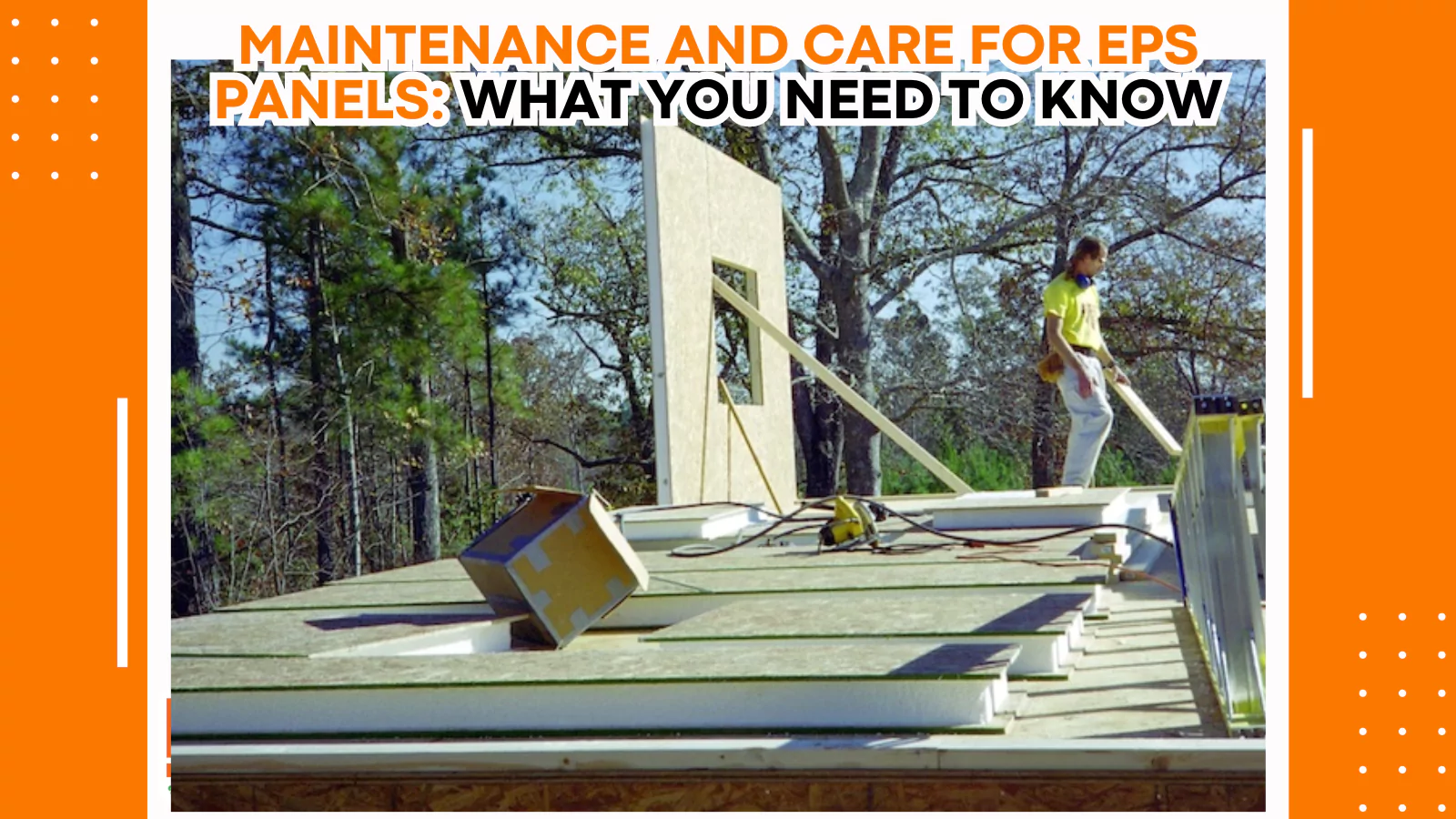Expanded Polystyrene EPS panel in India are increasingly popular in modern construction due to their excellent insulation properties, ease of installation, and low maintenance requirements. However, like any building material, EPS panels require specific care to ensure they perform effectively and maintain their longevity. This guide covers the essential aspects of maintaining and caring for EPS panels, ensuring they continue to deliver optimal performance throughout their lifespan.
Table of Contents
Toggle1. Regular Inspections
Conducting regular inspections of EPS panels is crucial for identifying potential issues before they become serious problems. Here are key points to consider during inspections:
- Visual Checks: Inspect the panels for any visible damage, including cracks, dents, or signs of wear. Pay close attention to areas around joints and edges, as these can be prone to damage.
- Moisture and Mold: Look for signs of moisture accumulation or mold growth, especially in areas exposed to high humidity or water. Although EPS panels are resistant to moisture, prolonged exposure to water can affect their performance.
- Structural Integrity: Ensure that the panels are securely attached and that there are no signs of shifting or detachment from the building structure.
2. Cleaning and Maintenance
EPS panel in India are relatively low-maintenance, but proper cleaning and care are essential to preserve their appearance and functionality:
- Gentle Cleaning: Use a soft brush or a vacuum with a brush attachment to gently remove dust and debris from the panel surfaces. For a more thorough clean, use a mild detergent diluted with water. Avoid abrasive cleaners or scrubbing tools, as they can damage the surface of the panels.
- Avoid Harsh Chemicals: Do not use strong solvents or chemicals that can degrade the EPS material. Stick to mild, non-abrasive cleaning solutions to ensure the panels are not harmed.
- Inspect After Cleaning: After cleaning, check the panels for any signs of damage or deterioration that might have been obscured by dirt or debris.
3. Protecting Against Physical Damage
EPS panels in India are durable but can be vulnerable to physical damage if not properly protected. Take the following steps to safeguard the panels:
- Avoid Impact: Prevent heavy impacts or sharp objects from coming into contact with the panels. This includes protecting them from damage during construction activities or maintenance work.
- Protective Coatings: Apply protective coatings or finishes recommended by the manufacturer to shield the panels from UV rays and physical damage. These coatings can enhance the longevity of the panels and maintain their appearance.
- Guard Against Pests: While EPS panels are resistant to pests, ensure that any surrounding areas are well-maintained to prevent pest infestations that could indirectly affect the panels.
4. Addressing Damage
If EPS panels sustain damage, prompt action is essential to prevent further issues:
- Repair Minor Damage: Small cracks or dents can often be repaired with appropriate fillers or patching compounds. Follow the manufacturer’s guidelines for repairing minor damage to ensure compatibility with the EPS material.
- Replacement of Panels: For more significant damage or if panels are compromised, replacement might be necessary. Ensure that replacement panels are of the same type and specification as the original to maintain consistent insulation performance.
- Professional Assessment: For extensive damage or if you’re unsure about the repair process, consult with a professional experienced in EPS panel systems. They can provide expert advice and ensure that repairs or replacements are carried out correctly.
5. Preventive Measures
Taking preventive measures can help prolong the life of EPS panels and maintain their effectiveness:
- Proper Installation: Ensure that EPS panel in India are installed according to the manufacturer’s guidelines. Proper installation minimizes the risk of damage and ensures that the panels perform as intended.
- Weather Protection: Protect the panels from extreme weather conditions during construction. Rain, snow, or intense sun exposure can impact the panels if not adequately shielded.
- Ventilation: Ensure that the building is properly ventilated to prevent issues related to moisture accumulation. Good ventilation helps maintain the integrity of EPS panels and the overall health of the building.
6. Safety Considerations
When maintaining or repairing EPS panels, prioritize safety:
- Personal Protective Equipment (PPE): Wear appropriate PPE, such as gloves and safety glasses, to protect yourself from dust or debris.
- Safe Handling: Handle EPS panels carefully to avoid physical damage. Employ proper lifting techniques and use appropriate equipment if needed.
7. Manufacturer’s Guidelines
Adhering to the manufacturer’s guidelines is crucial for the optimal maintenance and care of EPS panel in India. These guidelines are designed to ensure the panels perform as intended and to prevent issues that could arise from improper handling or installation. Here’s how to incorporate manufacturer’s recommendations into your maintenance routine:
- Installation Instructions: Follow the manufacturer’s detailed instructions for installation to avoid future problems. Correct installation practices help ensure that the panels perform well and have a longer lifespan.
- Maintenance Recommendations: Manufacturers often provide specific maintenance schedules and procedures. These guidelines include recommended cleaning agents, techniques, and any preventive measures needed to maintain the panels.
- Warranty Conditions: Review the warranty conditions provided by the manufacturer. To keep the warranty valid, it’s often necessary to follow the maintenance and care instructions outlined in the warranty terms. Understand what is covered and what might void the warranty.
8. Handling During Renovations or Repairs
If renovations or repairs are planned, special care must be taken to protect the EPS panels:
- Temporary Protection: During renovation work, shield the EPS panels from dust, debris, and potential damage. Use protective coverings or barriers to prevent accidental impacts or exposure to harsh chemicals.
- Careful Removal: If panels need to be removed for repairs, handle them with care to avoid damaging them. Follow best practices for removal and reinstallation to ensure that the integrity of the remaining panels and the building structure is maintained.
- Reinstallation: When reinstalling EPS panels or adding new ones, ensure that they are properly aligned and securely fastened. Follow the manufacturer’s guidelines for reinstallation to ensure consistent insulation performance.
9. Assessing Long-Term Performance
To ensure that EPS panels continue to perform well over the long term, regular assessment is important:
- Energy Efficiency: Periodically evaluate the building’s energy performance. If you notice increased energy bills or reduced thermal comfort, inspect the EPS panels for any signs of damage or deterioration that might be affecting their insulation properties.
- Structural Changes: Assess the impact of any structural changes or additions to the building. Ensure that modifications do not compromise the integrity of the EPS panels or their performance.
- Consultation with Experts: Engage with professionals who can assess the condition of the EPS panels and provide recommendations for any necessary upgrades or repairs. Their expertise can help identify issues that may not be immediately visible.
10. Disposal and Recycling
When EPS panels reach the end of their life cycle or need to be replaced, proper disposal and recycling are important for environmental responsibility:
- Recycling Options: Check if there are recycling facilities available in your area that accept EPS panels. Many regions have specialized recycling programs for EPS, which can help reduce environmental impact.
- Disposal Procedures: If recycling is not feasible, make sure to follow local regulations for disposing of EPS panels. Ensure that they are disposed of in a manner that minimizes environmental impact and complies with local waste management guidelines.
- Sustainable Practices: Consider incorporating sustainable practices into your construction and renovation projects, such as using recyclable materials or selecting alternatives with lower environmental impact.
Conclusion
Maintaining and caring for EPS panels involves several key practices to ensure their longevity and performance. Regular inspections, proper cleaning, protecting against physical damage, addressing repairs promptly, and following manufacturer’s guidelines are fundamental steps. Additionally, handling EPS panels with care during renovations, assessing their long-term performance, and following appropriate disposal and recycling practices contribute to their effective management and environmental responsibility.
By adopting these maintenance strategies, you can maximize the benefits of EPS panel in India, ensuring they continue to provide excellent insulation and durability while contributing to the overall efficiency and sustainability of your building.


